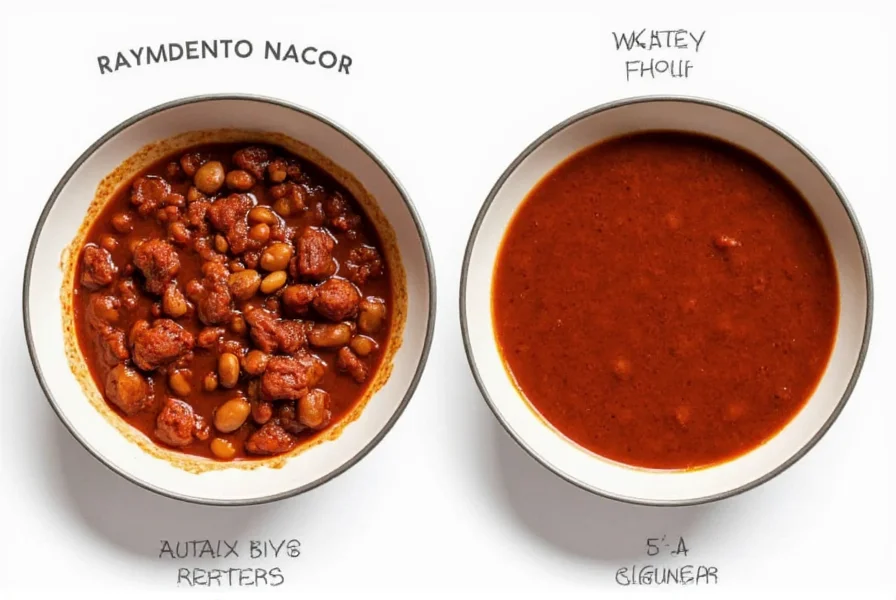The most effective ways to thicken chili include simmering uncovered to reduce liquid, creating a cornstarch slurry (1 tablespoon cornstarch mixed with 1 tablespoon cold water per cup of chili), making a flour-based roux, mashing some beans directly into the pot, or adding tomato paste. Simmering is the most natural method that enhances flavor, while cornstarch provides the quickest results without altering taste.
Nothing ruins a perfect pot of chili like finding it's too thin and watery. Whether you're a beginner cook or a seasoned chili maker, understanding how to properly thicken chili is essential for achieving that perfect, hearty consistency. The good news is there are multiple reliable methods that work without compromising your chili's carefully crafted flavor profile.
Why Your Chili Might Be Too Thin
Before reaching for thickeners, understand why your chili might be too thin. Common culprits include adding too much liquid initially, not cooking the chili long enough to allow natural reduction, using canned tomatoes with excess juice, or incorporating ingredients with high water content. Prevention is always better than correction—next time, try draining canned beans thoroughly and reducing added broth by 25%.
Top 6 Methods to Thicken Chili Properly
1. Simmering and Reduction (Most Natural Method)
The simplest and most flavor-preserving technique is simmering your chili uncovered. As the liquid evaporates, your chili naturally thickens while concentrating flavors. For best results:
- Bring chili to a gentle simmer
- Cook uncovered for 20-30 minutes
- Stir occasionally to prevent sticking
- Check consistency every 10 minutes
This method works exceptionally well for how to thicken chili without flour or additional ingredients. The slow reduction process enhances depth of flavor while achieving perfect texture.
| Thickening Method | Time Required | Flavor Impact | Best For |
|---|---|---|---|
| Simmering/Reduction | 20-45 minutes | Enhances flavor | All chili types |
| Cornstarch Slurry | 5-10 minutes | Neutral | Quick fixes |
| Bean Mash | 5 minutes | Earthy, hearty | Bean-based chili |
| Roux | 10-15 minutes | Nutty, rich | Meat-heavy chili |
2. Cornstarch Slurry (Quickest Solution)
When you need to thicken chili quickly before serving, a cornstarch slurry is your best friend. This method works in minutes without altering flavor:
- Mix 1 tablespoon cornstarch with 1 tablespoon cold water per cup of chili
- Whisk until completely smooth with no lumps
- Remove chili from heat momentarily
- Slowly whisk slurry into chili
- Return to low heat and cook for 5 minutes until thickened
Avoid adding cornstarch directly to hot chili, as this causes clumping. The ideal thickening chili with cornstarch ratio is 1:1 with cold liquid before adding to the pot.
3. Flour-Based Methods
Traditional cooking techniques using flour include:
- Roux: Cook equal parts flour and fat (butter or oil) until golden, then whisk into chili
- Beurre manié: Equal parts softened butter and flour kneaded together, then whisked in
- Dry flour: Sprinkle directly while stirring constantly (less recommended due to potential lumps)
Flour methods require cooking for 5-7 minutes to eliminate raw flour taste. They work well for how to make chili thicker without changing flavor significantly, though they add a subtle nuttiness.
4. Bean Mash Technique
For bean-based chili, remove 1-2 cups of chili (primarily beans and liquid), mash thoroughly, then return to the pot. This natural way to thicken chili adds body from the beans' starches without introducing foreign ingredients. Works especially well with kidney beans or pinto beans which contain natural thickeners.
5. Tomato Paste Boost
Add 2-3 tablespoons of tomato paste and simmer for 10 minutes. The concentrated tomatoes absorb excess liquid while enhancing the chili's base flavor. This method serves double duty by both thickening and deepening the overall taste profile.
6. Masa Harina or Ground Tortilla Chips
For authentic Southwestern flavor, stir in 2-3 tablespoons of masa harina (corn flour) or finely crushed tortilla chips. These ingredients thicken while adding a subtle corn flavor that complements traditional chili recipes.
When to Thicken Your Chili
Timing matters significantly. The best moment to thicken chili is during the last 20-30 minutes of cooking. This allows flavors to meld while the thickener integrates fully. Avoid thickening too early, as continued cooking can make your chili overly dense. For last-minute fixes when chili is already served, use the cornstarch method which works in minutes.
Common Thickening Mistakes to Avoid
Many home cooks make these errors when trying to thicken chili without compromising quality:
- Adding thickeners to boiling chili (causes lumps)
- Using too much thickener at once (better to add incrementally)
- Not cooking out raw flavors (especially with flour)
- Stirring insufficiently (leads to uneven thickening)
- Thickening too early in the cooking process
Troubleshooting Thin Chili
If your chili remains too thin after initial attempts:
- Return to simmer uncovered for additional 15-20 minutes
- Try a combination method (simmering plus small cornstarch addition)
- Add absorbent ingredients like cooked rice or quinoa
- For immediate serving, spoon chili over rice or cornbread which soaks up excess liquid

Preventing Thin Chili in Future Batches
The best approach is prevention. When making chili next time:
- Use less liquid initially—you can always add more
- Drain canned ingredients thoroughly
- Cook meat first to render fat, which helps emulsify the mixture
- Include ingredients with natural thickening properties like beans and tomatoes
- Plan for 30-45 minutes of uncovered simmering time at the end











 浙公网安备
33010002000092号
浙公网安备
33010002000092号 浙B2-20120091-4
浙B2-20120091-4